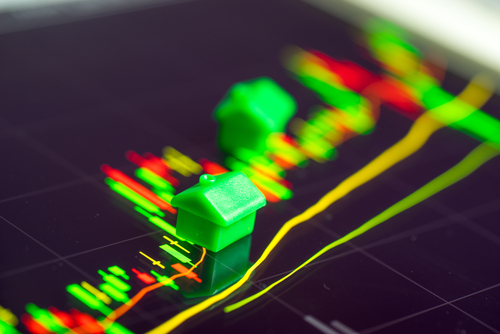First-time Buyers
House price inflation slows in August

The rate of annual house price inflation slowed to 2.1% in August compared to 2.9% a month earlier, with the average property value standing at £210,495 in August, slightly down from £211,671 in July according to the Nationwide House Price Index.
Commenting on the figures, Robert Gardner, Nationwide’s chief economist, said:
“The annual pace of house price growth moderated to 2.1% in August, from 2.9% in July. The slowdown in house price growth to the 2-3% range in recent months from the 4-5% prevailing in 2016 is consistent with signs of cooling in the housing market and the wider economy.
“The economy grew by around 0.3% per quarter in the first half of 2017, around half the pace recorded in 2016. The number of mortgages approved for house purchase moderated to a nine-month low of around 65,000 in June and surveyors have reported softening in the number of new buyer enquiries.
“Nevertheless, in some respects the slowdown in the housing market is surprising, given the ongoing strength of the labour market. The economy created a healthy 125,000 jobs in the three months to June and the unemployment rate fell to 4.4% – the lowest rate for over 40 years. In addition, mortgage rates have remained close to all-time lows.
“It may be that mounting pressure on household finances is exerting a drag. Wages have been failing to keep up with the cost of living in recent months and consumer sentiment has weakened. While measures of housing affordability are not particularly stretched at a UK level, pressures are evident in some regions – especially London and the South of England.
“Nevertheless, constrained supply is likely to continue to provide support for house prices. The stock of homes on estate agents’ books remains close to 30-year lows and the number of new homes coming onto the market remains subdued. As a result, we continue to expect prices to rise by around 2% over 2017 as a whole.”
Nationwide also calculated that the government’s Stamp Duty take has hit record highs in recent quarters, reaching £12.8 billion in the 12 months to Q2 2017, well above the £10.6 billion peak recorded in late 2007.
Nationwide’s Gardner said:
“This may appear surprising, given that the number of residential property transactions in the year to June 2017 was 30% below that recorded in the same period of 2007.
“Higher house prices are part of the explanation. UK prices are 12% above their 2007 peak. More importantly, house prices in London, the Outer Metropolitan and the Outer South East regions are significantly higher (56%, 38% and 26% higher than the 2007 peak respectively). This is important because these regions contribute significantly more than their par share of Stamp Duty revenues as house prices are well above the UK average. For example, in 2007, London and the Outer Metropolitan regions accounted for 25% of housing transactions, but an estimated 50% of total Stamp Duty revenues (in England & Wales).”
Jonathan Samuels, CEO of property lender, Octane Capital, added:
“The 3% surcharge on second homes and buy to let properties has been a major driver in surging Stamp Duty revenues.
“This has been one of the most fundamental changes to the UK property market for many years and its effects are already evident.
“The punitive level of Stamp Duty at the higher end of the market has seen this area of the market cool down significantly. So while people are paying more, there have been far fewer transactions.
“At the higher end of the market, new Stamp Duty rates have put countless transactions to the sword and so whether this is contributing to increased revenues is open to question.”